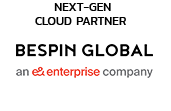
Philippe Deblois, Global VP, Solutions Engineering at Dynatrace, discusses the UAE’s digital edge, the evolution of observability, and how AI is shaping the future of IT operations.
With the UAE fast emerging as a global hub for digital innovation and AI integration, industry leaders are keenly investing in solutions that simplify complexity and drive performance across hybrid cloud environments.
Dynatrace, a global leader in observability, is among the few vendors making deep inroads in the region by enabling enterprises to anticipate, automate, and accelerate their digital journeys. In this exclusive conversation, Philippe Deblois, Global Vice President, Solutions Engineering at Dynatrace, shares his top insights with Tahawultech.com on why the UAE is a magnet for next-gen digital projects, how observability is evolving into a business-critical strategy, and why AI isn’t just a feature—but the foundation of the future.
Interview Excerpts:
Where do you see the UAE in terms of its digital transformation journey? What stands out to you most?
The UAE is currently one of the most exciting places for digital transformation. There are numerous ongoing projects, and partnerships such as NVIDIA with G42 and Humane in Saudi Arabia are advancing the concept of AI factories. The Emirates are clearly leading this movement. At Dynatrace, we’ve seen this as a reason to significantly expand our presence—investing in resources, growing our team by 280%, and launching our own cloud instance in Abu Dhabi. We are the only observability vendor to do so.
How is observability evolving from traditional monitoring to a full-scale business solution?
Traditional monitoring was reactive—problem occurs, then you respond. Observability, on the other hand, is proactive. It helps prevent issues before they arise by enabling automation, auto-remediation, and performance optimisation. It spans across multi-cloud and hybrid environments and even integrates with AI agents—creating a comprehensive solution that supports modern digital systems.
Can you explain observability in simple terms?
Observability is essentially about visibility—understanding how systems perform and interact. It’s designed to work across all systems, helping identify performance gaps and enabling automated optimisation and protection.
What makes Dynatrace’s observability platform unique in today’s complex IT environments?
What sets Dynatrace apart is our all-in-one platform approach. We developed our own backend architecture called Grail, which consolidates logs, traces, metrics, and business/security events into a single data layer. Additionally, AI is built into the core—not added on.
“We use what we call the “power of three”: causal AI, predictive AI, and generative AI. We’re also exploring agentic AI for orchestrated communication between AI agents and systems.”
Does managing such AI-powered systems require specialised manpower? Are users equipped to handle this?
There’s a global need to upskill for AI, no doubt. But with Dynatrace, users don’t need to be AI experts. Our platform handles the complexity behind the scenes. Users only need to learn how to apply the insights to improve customer or business outcomes.
Do you encounter resistance from traditional mindsets when advocating for observability and cloud adoption?
Yes, we often do. While innovators grasp the need, some laggards still hesitate. But as businesses move away from three-tier applications toward microservices and cloud-native models, complexity increases. That’s when they start seeing value in observability—especially when it helps them reduce friction and gain control during transformation.
Which industries in the UAE are adopting observability solutions most rapidly?
We’ve seen strong adoption in government, banking, and aviation. These sectors rely heavily on customer-facing applications, and any disruption directly impacts user experience. Companies are prioritising performance because customers today are vocal—especially on social media—and poor experience can harm reputation fast.
What are your top tips for businesses aiming to stay competitive and resilient through observability?
First, treat observability as essential—not optional. Modern IT environments are too complex to manage without it. Second, use observability to enhance security—identify vulnerabilities and prioritise fixes. Third, focus on business observability—understanding critical processes like account openings in banking can reveal operational inefficiencies and help improve customer satisfaction.



